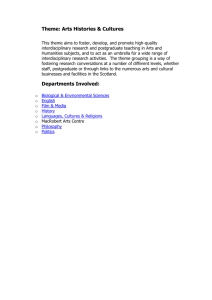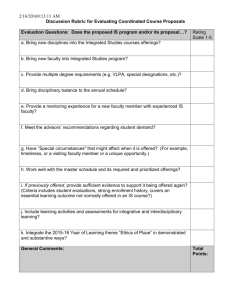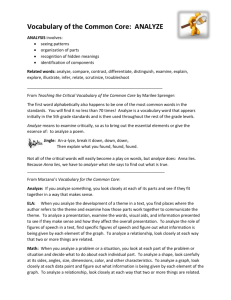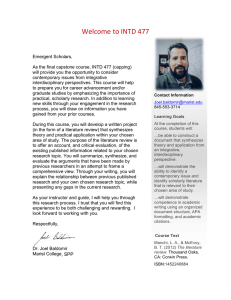Curriculum Integration Continuum: Philosophy & Examples
advertisement
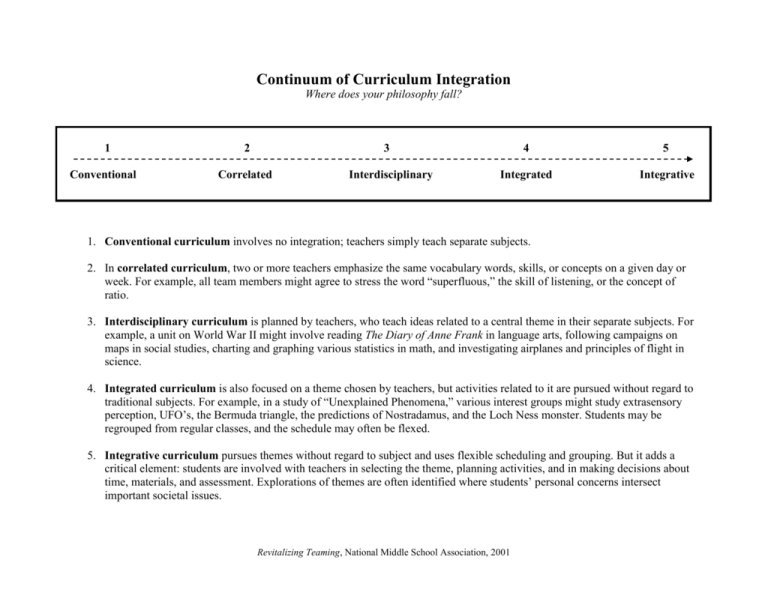
Continuum of Curriculum Integration Where does your philosophy fall? 1 Conventional 2 3 Correlated Interdisciplinary 4 5 Integrated Integrative 1. Conventional curriculum involves no integration; teachers simply teach separate subjects. 2. In correlated curriculum, two or more teachers emphasize the same vocabulary words, skills, or concepts on a given day or week. For example, all team members might agree to stress the word “superfluous,” the skill of listening, or the concept of ratio. 3. Interdisciplinary curriculum is planned by teachers, who teach ideas related to a central theme in their separate subjects. For example, a unit on World War II might involve reading The Diary of Anne Frank in language arts, following campaigns on maps in social studies, charting and graphing various statistics in math, and investigating airplanes and principles of flight in science. 4. Integrated curriculum is also focused on a theme chosen by teachers, but activities related to it are pursued without regard to traditional subjects. For example, in a study of “Unexplained Phenomena,” various interest groups might study extrasensory perception, UFO’s, the Bermuda triangle, the predictions of Nostradamus, and the Loch Ness monster. Students may be regrouped from regular classes, and the schedule may often be flexed. 5. Integrative curriculum pursues themes without regard to subject and uses flexible scheduling and grouping. But it adds a critical element: students are involved with teachers in selecting the theme, planning activities, and in making decisions about time, materials, and assessment. Explorations of themes are often identified where students’ personal concerns intersect important societal issues. Revitalizing Teaming, National Middle School Association, 2001

